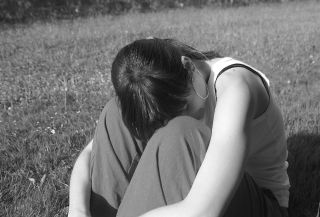Grief
Grief: What Is Normal and What Is Prolonged Grief Disorder
Helpful ways exist to successfully traverse two forms of grieving.
Posted January 4, 2024 Reviewed by Gary Drevitch
Key points
- Normal grief is a process that varies from person to person.
- Prolonged Grief Disorder occurs when this process is derailed.
- Normal grieving is supported by joining specialized groups of mourners and cultural and religious customs.
- Prolonged Grief Disorder Therapy focuses on healing themes and achieving milestones as recovery progresses.

The Buddha suggested that everything in life is impermanent, and the way to avoid suffering is to avoid attachment to persons or things. For most of us, attachment to people we love is a key aspect of being human, and we cherish it. But there is no doubt that the price of love is grief after we lose someone we love.
There is a distinction, though, between normal grieving and the condition now recognized as prolonged grief disorder. It’s important to recognize the differences, since treatment can be very helpful when normal grieving becomes a disorder.
Normal grief
- Grief is a process. It proceeds and changes over the weeks, months, years, and decades after the loss of a significant other.
- There is no uniform process of grieving. Many different emotions are experienced, often including the well-known set of denial, anger, bargaining, depression, and acceptance, but they follow no order or progression and can appear and reappear at many points during the grieving process.
- We don’t have to structure or set a timetable or path for grief to follow. Our minds do this naturally. We best allow this to happen, fully experiencing the shifting emotions as they appear. Our mind will find its own way to process the feelings and thoughts, reducing them on its own schedule.
- Over time, the duration of which differs for each person and for each of their loved ones who has died, one gradually adjusts to the loss.
- Longing for the lost person remains, but it is not at the forefront of one’s attention. Sometimes the longing and sadness return for a moment or more, but it’s a fleeting feeling and not persistent.
- We can find ways of honoring one’s connection with the lost one, such as supporting the causes that were meaningful to them.
- The person becomes able to once again experience meaning and joy in life, including deep relationships with loved ones and good friends.
Prolonged grief disorder
- The process of healing and adaptation to the loss is stymied.
- The intense suffering of the early stages of grief does not become progressively more bearable with time.
- For at least a year, the yearning for the lost loved one remains at full strength, similar to the early months following the loss.
- The griever is still preoccupied with thoughts and memories of the lost one. They may avoid reminders that the person has died or search for things that remind them of the lost person.
- The bereaved person cannot reengage with their previous roles and functions. There is a disruption in their sense of identity or purpose in life
- Prolonged grief disorder shares some qualities with, but is different from, major depressive disorder secondary to bereavement. The yearning is much more intense, and there are frequent waves of grief specifically triggered by missing the loved one, rather than there being a pervasive low mood.
Support for normal grieving
- Grief support groups can be helpful as people navigate adjusting to their loss. New members in the acute stages of grief find understanding and hope. Older members experience the satisfaction that comes from helping others.
- Cultures and religions have developed wise customs to help people move along the grieving process. For example, in Judaism, during the first intense 7 days following a burial, the bereaved remain at home and food is arranged for them by their friends. Every evening a prayer service is held in their home, and friends and relatives come to offer condolences and all-important social support. After this week comes a transition: For a month, mourners begin to resume their lives, leaving home and returning to work, but as a sign of their continuing grieving, they avoid festive activities. They also attend a daily synagogue prayer service, where mourners join any other mourners present in reciting a specific prayer. This expresses one’s status as a mourner and provides another form of social support. (When it is a parent who has died, this period lasts for another 10 months.)
- Such rituals communicate the expectation that grief will be initially intense but that there is a progression toward healing, re-engagement, and recovery.
Therapy for Prolonged Grief Disorder
- Approximately 10 percent of bereaved children and adults experience prolonged grief disorder. As of March 2022, the American Psychiatric Association has included this condition in its manual (which also means that insurance companies may cover the cost of treatment).
- Cognitive-behavioral therapy can be quite helpful.
- A specialized treatment, Prolonged Grief Disorder Therapy, has been developed; it focuses on specific healing themes and milestones, including Understanding and accepting grief; Monitoring and managing grief emotions, both painful and positive; Seeing that the future holds promise; Strengthening important relationships; Revisiting and telling the story of the death; Learning to live with reminders of the lost person; and Learning to connect with memories.
- For those with additional signs of depression, combining one of these talk therapies with antidepressant medication can be beneficial.
Loss and grief are unavoidable experiences in life. Painful and debilitating though they may be, nature has endowed us with innate psychological mechanisms so that the wound does heal. For those who become stuck somewhere along the path to recovery, psychotherapy can help them resume and follow it to successful healing.
To find a therapist, visit the Psychology Today Therapy Directory.


